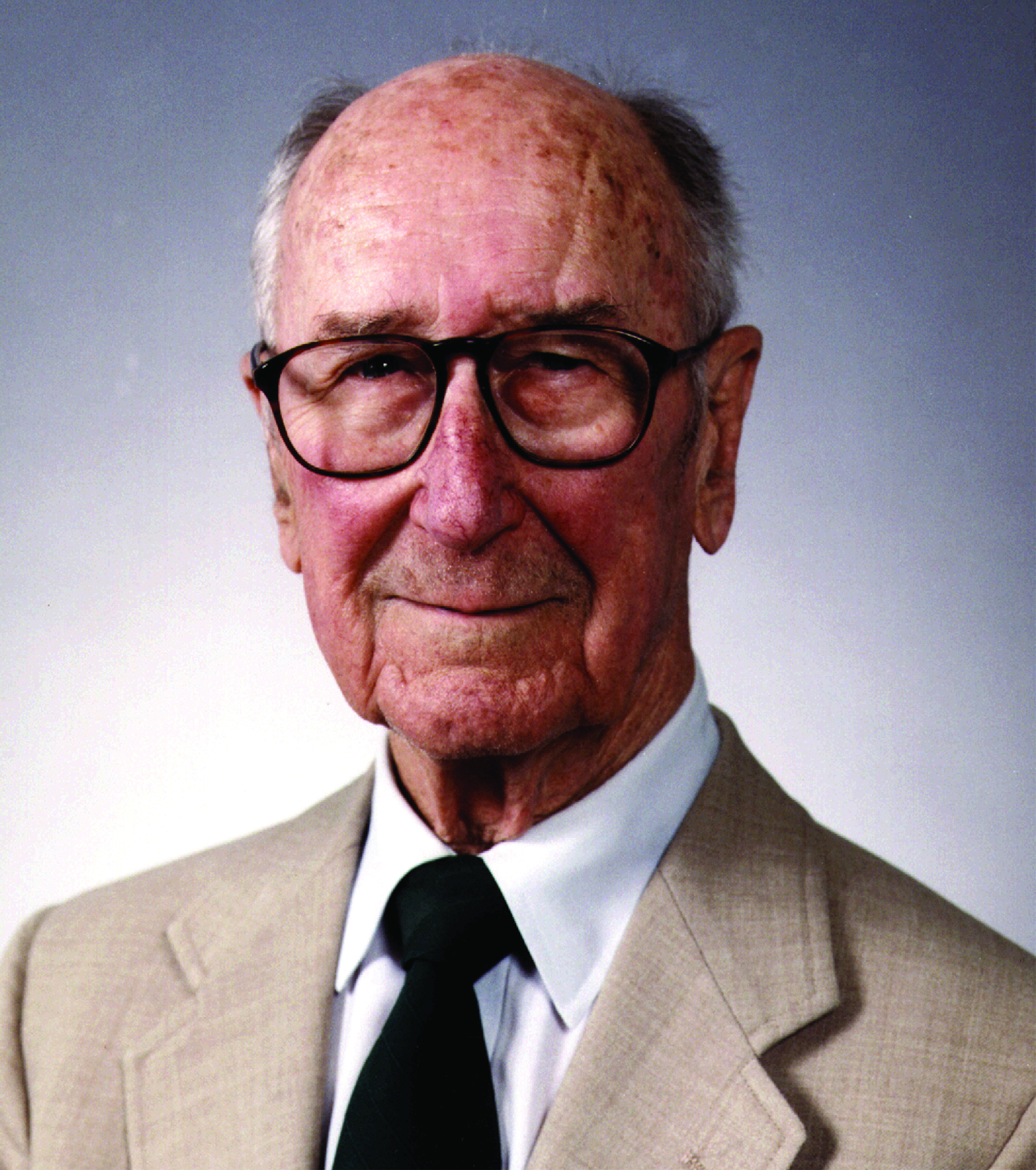Obituary - Howard F. McMurdie (1905 - 2004)Biography | Publications | Curriculum Vitae | Videos | Slides | Articles | Obituary
Howard F. McMurdie (1905 - 2004)ACA RefleXions, Winter 2004
Howard F. McMurdie – known as Mac to his friends and colleagues – was an exemplar of good living. Blessed with excellent health, a loving family, and many close colleagues, Mac was active and productive to the very end. It is therefore with the deepest regret that we report the death of Howard F. McMurdie at age 99 1⁄2 of pneumonia only a few months before an anticipated 100 year birthday celebration. Although Mac officially retired from the National Bureau of Standards (NBS) in 1966, he continued to work as a consultant in crystallography until 2003. During his “real retirement” party at National Institute of Standards and Technology (NIST) in April 2003, he was awarded a special certificate of appreciation “for his significant contributions to the Materials Science and Engineering Laboratory of NIST during the past 75 years.” The certificate noted that McMurdie’s “research interests encompassed areas such as measurements of phase equilibria and reference powder x-ray patterns, characterization of solid-state materials, compilation and evaluation of data for phase equilibria diagrams, and for the Powder Diffraction File.” Howard McMurdie was born on February 5, 1905 in Kalamazoo, Michigan, and graduated from Northwestern University in Evanston, Illinois. He went to work for what was then called the National Bureau of Standards on April 2, 1928. In the early 1930s he was sent to Riverside, California to test the cement that was to be used in the construction of Boulder (now Hoover) Dam. After returning to NBS he was assigned to the Petrographic Laboratory. His study of Portland cement was the start of what evolved into a lifetime interest in phase diagrams. In those early days, McMurdie also pursued the use of x-ray powder diffraction for phase analysis of solids. These activities paved the way for him to become Chief of the Crystallographic Section. Mac was a beloved chief. He had confidence in his people, encouraged them to pursue independent research, and supported their work. As Section Chief and as a researcher, McMurdie contributed significantly to many areas of research throughout his 75 years at NIST/NBS. McMurdie considered three areas as especially important, and he had been closely related to two of them for the 38 years following his formal “retirement” in 1966. His first area of interest centered on the production of Powder Diffraction patterns and NBS’s productive association with the International Centre for Diffraction Data (ICDD). In 1953, he established an ICDD Research Associateship in the Crystallographic Section at NBS/NIST. For more than 30 years, this Associateship, under his guidance and leadership, prepared a broad set of important, accurate, and widely used experimental powder diffraction patterns. He also served as an editor of the Powder Diffraction File (PDF) and continued to edit patterns until age 98. His work with the ICDD was recognized by two honors. In 1984, he became a Distinguished Scientist of the ICDD. In the late 1990’s, ICDD set up a biannual award – the McMurdie Award to honor his contributions to the organization and to the Powder Diffraction File. His second area of interest focused on refractory oxides. It was through research in this area that he established a relationship with the American Ceramic Society (ACerS) and started the publication of the series, Phase Diagrams for Ceramists. After his retirement, Mac continued to be an editor for the phase diagrams until age 98. In materials science, these diagrams have long been used in the development of new materials and processing of important ceramics. The third area in which he had a keen interest was initiated in the Crystallography Section and involves the study of materials at high pressure. His vision together with the ingenious work of a group of world-class scientists at NIST/NBS led to the development of the diamond anvil cell (DAC), of the high pressure single-crystal diffraction technique utilizing the DAC, and of an optical ruby fluorescence method to measure very high pressure in the DAC. This work earned NBS/NIST a stellar international reputation in the field of high-pressure science and technology. Several key papers resulting from this long-term research effort are now widely regarded as key milestones in the evolution of high-pressure science. Over the years Mac served as a paradigm of how to live with his emphasis on balance, diversity, and moderation in all things. Not only was he a dedicated and hard-working scientist, he was also a thoughtful and generous person who was well-liked. To balance his scientific work, he developed a broad spectrum of interests including cooking, reading, travel, photography, computing, opera and Gothic architecture. He was a gourmet cook and prepared dinner at his home every Wednesday evening for his extended family (3 children, 6 grandchildren and 5 great grand- children). Often, he would invite friends to his home for wine and cheese or even a meal and conclude the evening with a glass of fine wine or Rebel Yell, his favorite bourbon-style whiskey. He derived great pleasure from the social interaction with us in our periodic luncheons sometimes held in one of his favorite local restaurants. Clearly Mac will be missed enormously, but he will not be forgotten. He will live on in his work and in our collective fond memories! - Alan Mighell, Gasper Piermarini and Winnie Wong-Ng |

